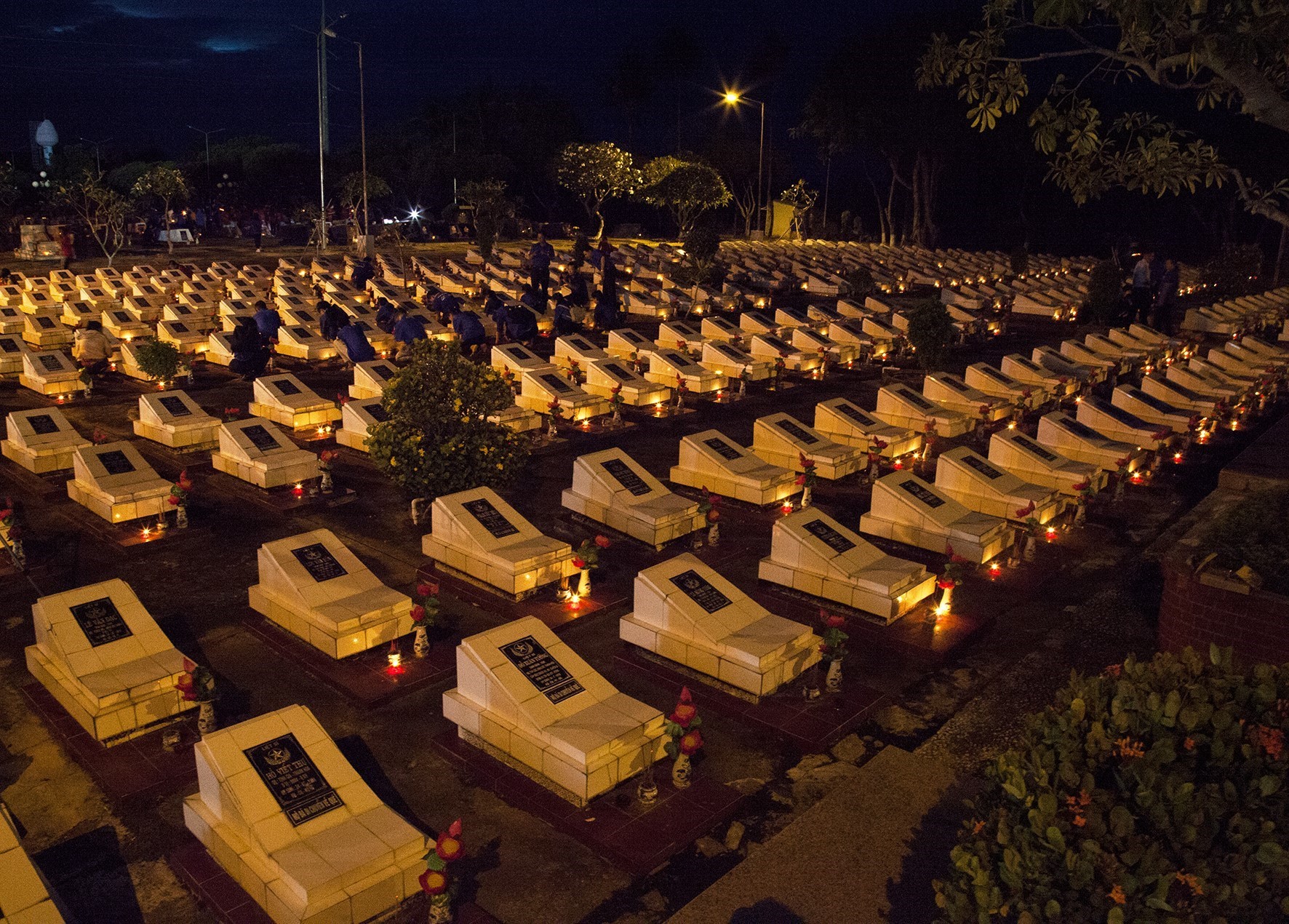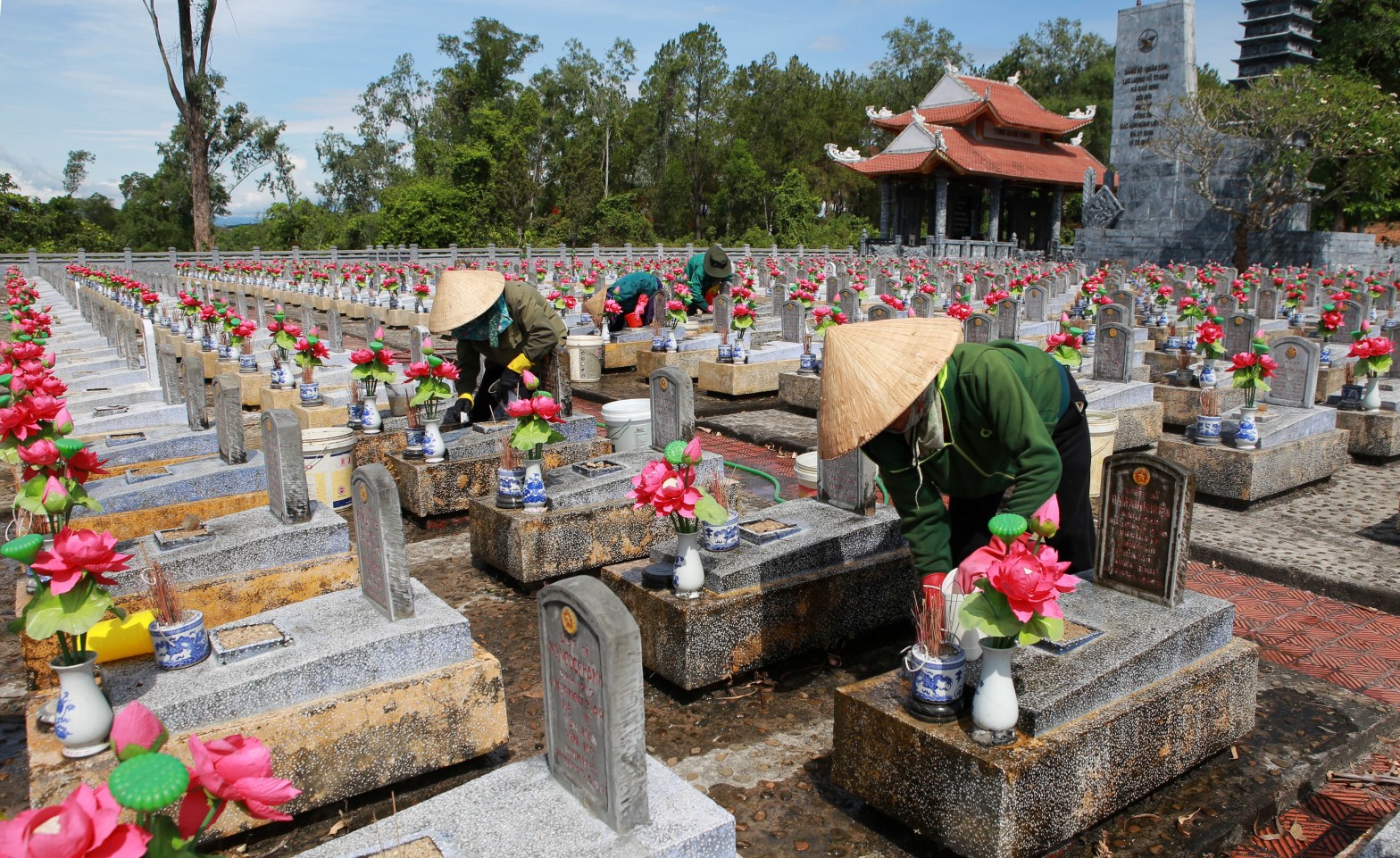Hanoi (VNA) – There are hundreds of thousands of graves with headstones lacking information about the persons buried there in cemeteries across Vietnam. The pain of the families who see the words “Liet sy vo danh” (Unknown martyr), “Chua biet ten” (Name remains unknown) or “Mo liet sy chua xac dinh duoc thong tin” (Grave of an unidentified martyr) on the headstones is also the pain of all Vietnamese people.
Therefore, returning names to the ones who laid down their lives for the independence and freedom of the homeland is the responsibility of not only authorities but of all people living in peace.
The pain from graves of unknown martyrs
Every July, around the time of the War Invalids and Martyrs’ Day (July 27), tens of thousands of martyrs’ relatives, their comrades and visitors come to cemeteries and historical relic sites in the central province of Quang Tri to pay homage to the soldiers who bravely sacrificed their lives for the sake of the homeland. This land was once the fiercest battlefield in the resistance war against the US.
60,000 young soldiers from across the country fell down in Quang Tri during the war. They now rest in 72 cemeteries of Quang Tri, including two national cemeteries – Truong Son Cemetery and Road 9 Cemetery.
Each gravestone in these cemeteries is engraved with a different name, each name represents a person who laid down their life for the glory of the country, but at same time, it also causes the pain of a family.
There are more than 300,000 graves of martyrs with headstones reading “Unknown martyr”, “Name remains unknown” or “Grave of unidentified martyr” at present, according to the Ministry of Labour, Invalids and Social Affairs.
The large number of graves lacking information at martyrs’ cemeteries symbolises the wartime pain that still exists today.
According to the Ministry of Labour, Invalids and Social Affairs, there are more than 300,000 graves of martyrs with headstones reading “Unknown martyr”, “Name remains unknown” or “Grave of unidentified martyr” at present. They are located at over 3,000 cemeteries nationwide.
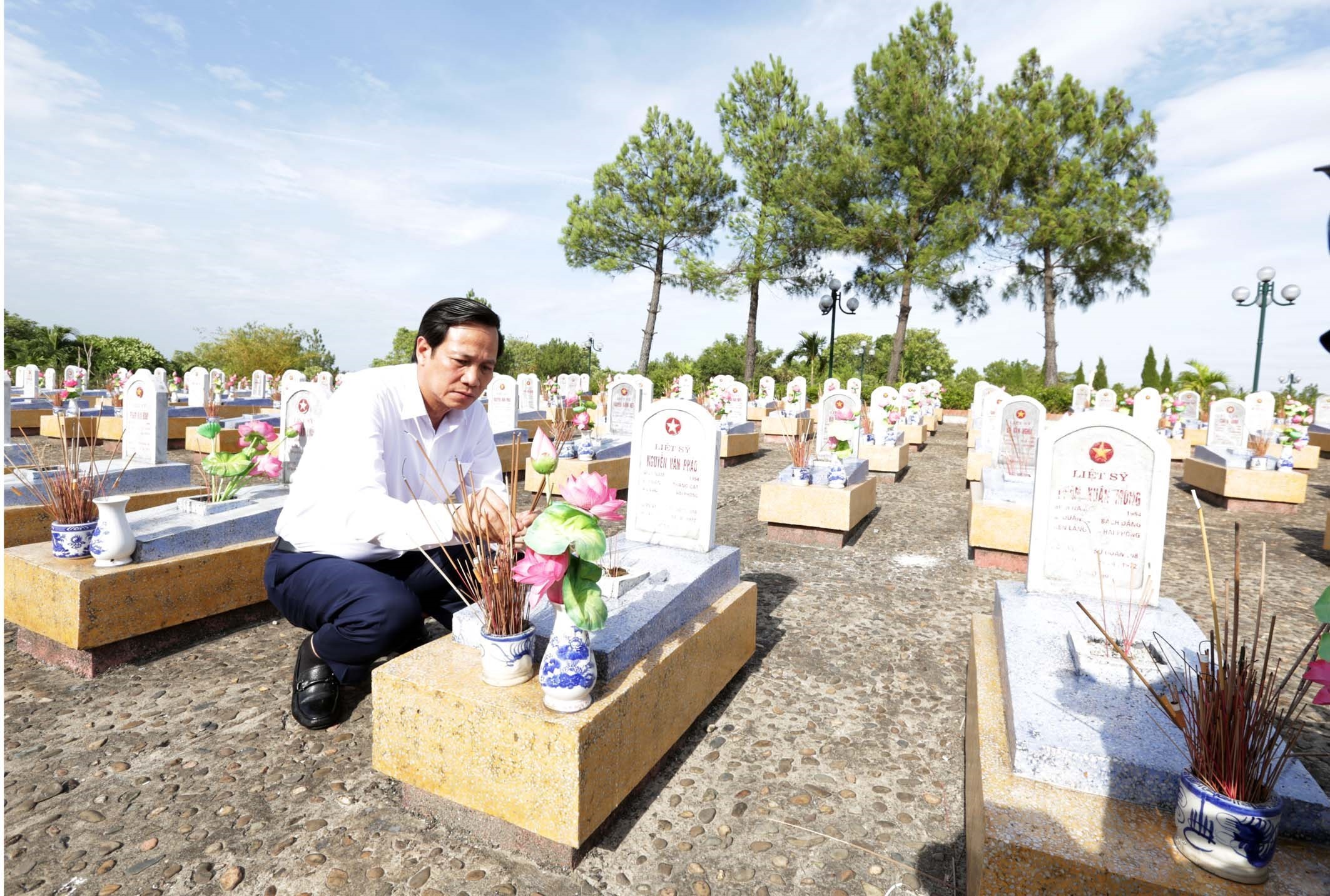
To express gratitude to the heroic martyrs, the Party and State have paid heed to the planning and upgrading of martyrs’ cemeteries into places of spiritual culture, which are meant to both pay tribute to martyrs and educate the young on the revolution.
In 2014, the Ministry of Labour, Invalids and Social Affairs issued Joint Circular No. 13/2014/TTLT-BLDTBXH-BTC on the building and management of facilities commemorating martyrs. This circular stipulates that in cases of lacking information about the dead, the headstones must be engraved with “Grave of an unidentified martyr”, instead of “Unknown”.
The sector is striving to complete the correction of content on such headstones in 2020. However, while many provinces and cities have completed the work, a locality housing a large number of martyrs’ graves like Quang Tri is facing funding problems.
The labour, invalids and social affairs sector is striving to complete the correction of headstones in 2020 so that the words “Unknown martyr” will not deepen the painful losses those martyrs’ families suffer.
Director of the provincial Department of Labour, Invalids and Social Affairs Phan Van Linh said there are 20,000 graves of unidentified martyrs in Quang Tri at present, including 6,000 with headstones reading “Unknown”.
With such a large number of headstones needing correction and a limited local budget, the province is unable to finish the work on schedule as requested by the Ministry of Labour, Invalids and Social Affairs, he noted, adding that it needs support from central agencies.
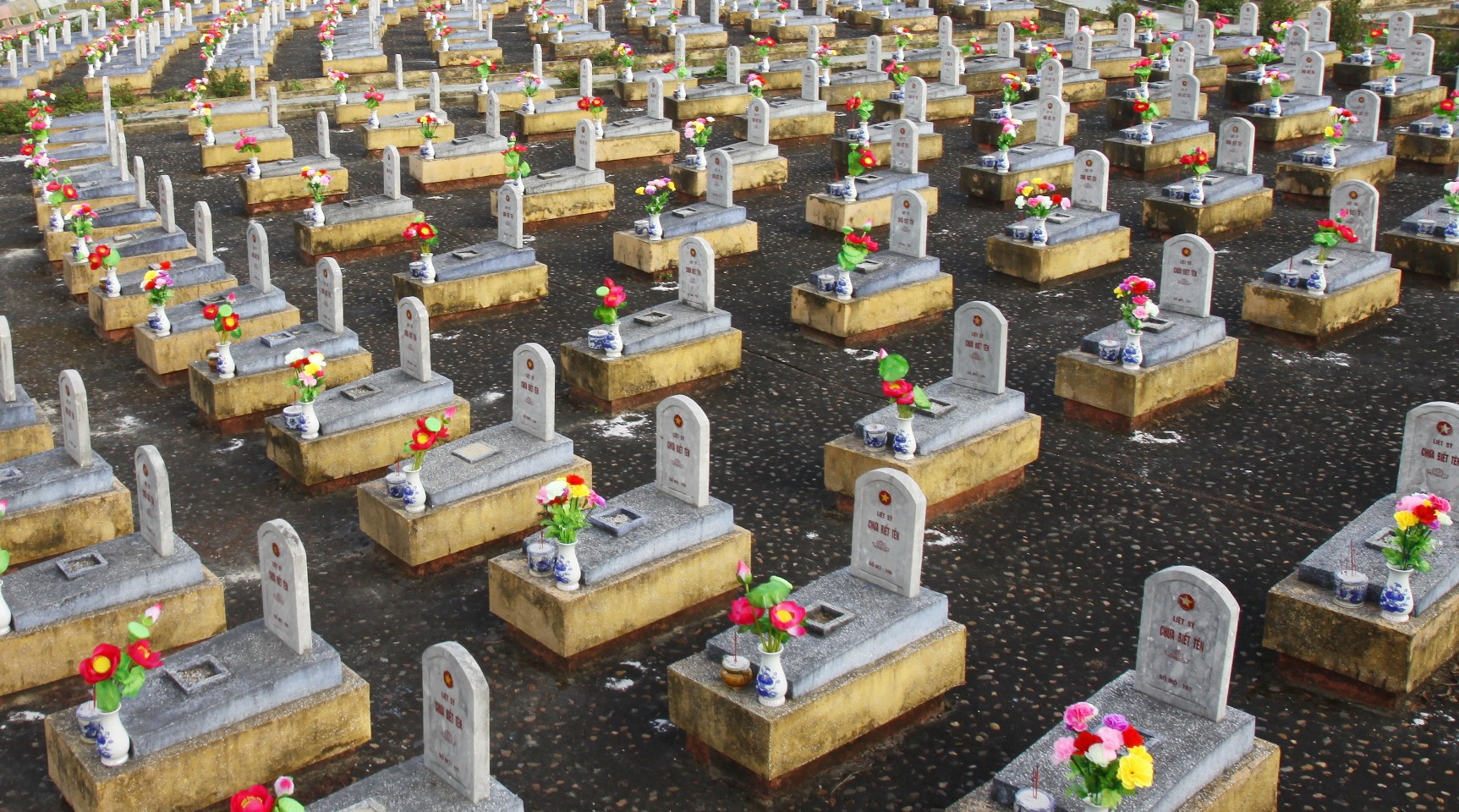
Minister of Labour, Invalids and Social Affairs Dao Ngoc Dung said all headstones engraved with “Unnamed martyr” or “Unnamed” must be changed in 2020. In case headstones reading “Your name lives forever together with the name of the nation” or “Name remains unknown” could be fixed later.
In regards to funding, he said the work could be financed through the local budget, in addition to the ministry’s funding already allocated. For Quang Tri, it should report its case to the ministry to find solutions.
Seeking to return names to martyrs
More than 3,000 martyrs’ cemeteries nationwide and the thousands of monuments built in former battlefields have been rehabilitated regularly and have become popular destinations for millions of Vietnamese people every July.
Each year, martyrs’ cemeteries receive martyrs’ remains brought back from former battlefields, and Laos and Cambodia. The search for, repatriation and identification of martyrs have never stopped.

To identify martyrs’ remains that still lack information, in the first half of 2020, the Department of National Devotees under the Ministry of Labour, Invalids and Social Affairs received 650 cases, including 411 samples of remains kept at the gene bank, 239 others sent by martyrs’ relatives for DNA testing and 301 samples of martyrs’ relatives.
Each year, martyrs’ cemeteries receive martyrs’ remains brought back from former battlefields, Laos and Cambodia. The search for, repatriation and identification of martyrs has never stopped.
Deputy Minister of Labour, Invalids and Social Affairs Le Tan Dung said identifying unknown martyrs is a concern of the Party, the State, people and martyrs’ families, adding that in recent years, the labour, invalids and social affairs sector has worked with the Ministry of National Defence to unceasingly retrieve martyrs’ remains and carry out DNA testing.
At present, the collection of samples from martyrs’ relatives is still being conducted. At certain points in time, when martyrs’ relatives pass away, it will be very difficult to compare DNA test results, which now a great concern. Therefore, collecting samples of martyrs’ remains and their relatives must be carried out concurrently, the official noted.
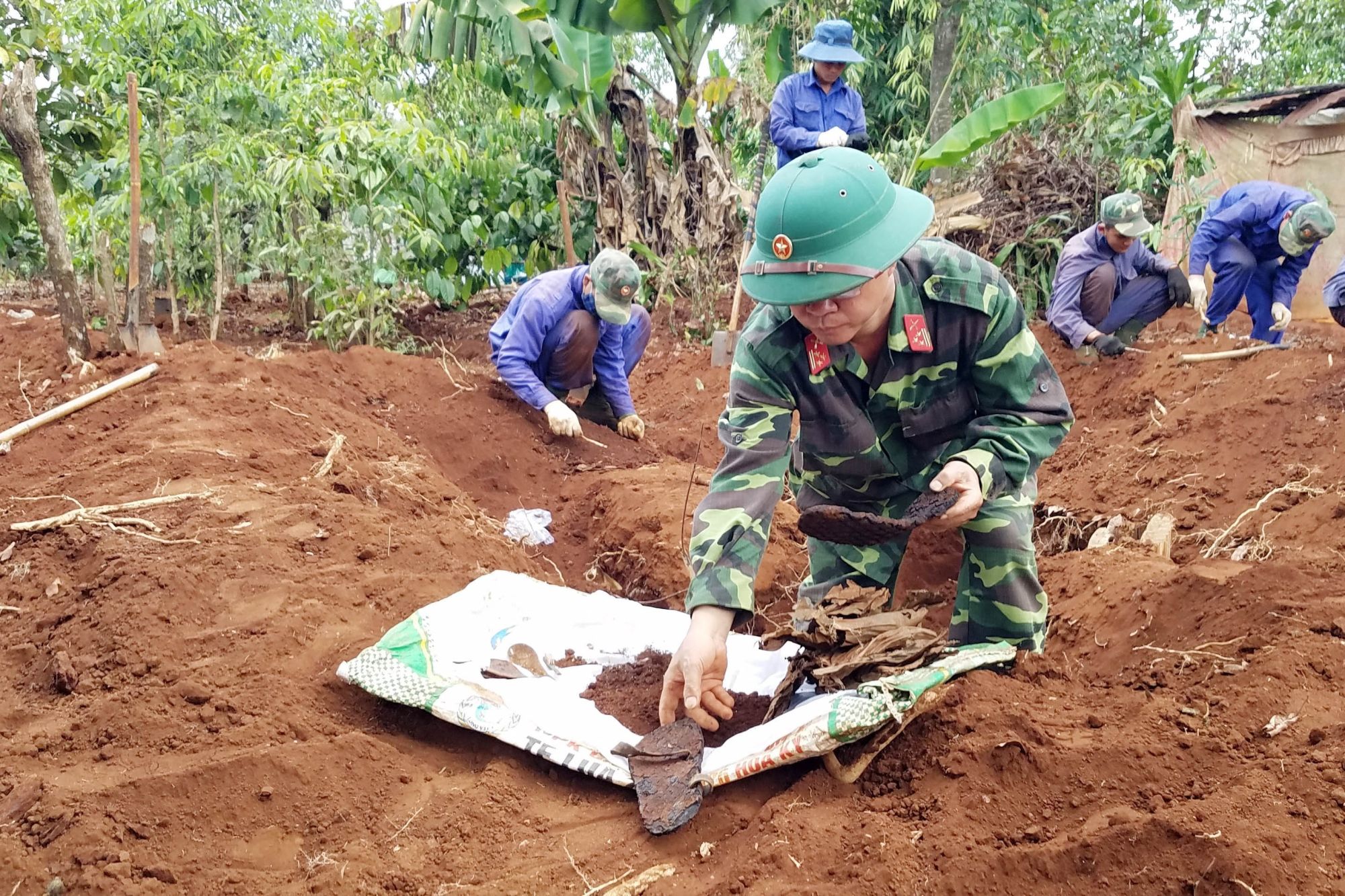
Dung said identifying martyrs by DNA testing is a complicated task as remains were underground for too long. Many soldiers died in the resistance wars against France and the US and were buried in deeply flooded or mountainous areas, leaving their remains in a poor condition, and hampering DNA testing.
He added that his sector is always ready to join hands with localities, sectors, organisations and the citizens to exert every effort to identify martyrs. Each gravestone with sufficient information is a contribution to the relief of the pain suffered by martyrs’ families.
Each gravestone with sufficient information is a contribution to the relief of the pain suffered by martyrs’ families.
To push ahead with the identification of unknown martyrs, in the last six months of 2020, the Ministry of Labour, Invalids and Social Affairs is coordinating with ministries, sectors and localities to carry out this task with positivism and DNA testing.
Efforts to repatriate remains and identify martyrs are demonstrations of people’s gratitude to and respect for the ones who laid down their lives for the sake of the nation’s independence and freedom. Every July, more than 3,000 martyrs’ cemeteries are lit up to commemorate the martyrs reburied there, as well as hundreds of thousands of others still resting somewhere in the embrace of the Motherland./.
Marking the 73rd War Invalids and Martyrs’ Day, at the proposal of the Ministry of Labour, Invalids and Social Affairs, the Prime Minister recognised and grant the “To Quoc ghi cong” (The Fatherland recognises your dedication) certificate to 315 martyrs, and renew more than 6,500 certificates. The ministry is also pressing on with the identification of unknown martyrs and the standardisation of information on headstones of martyrs’ graves.
